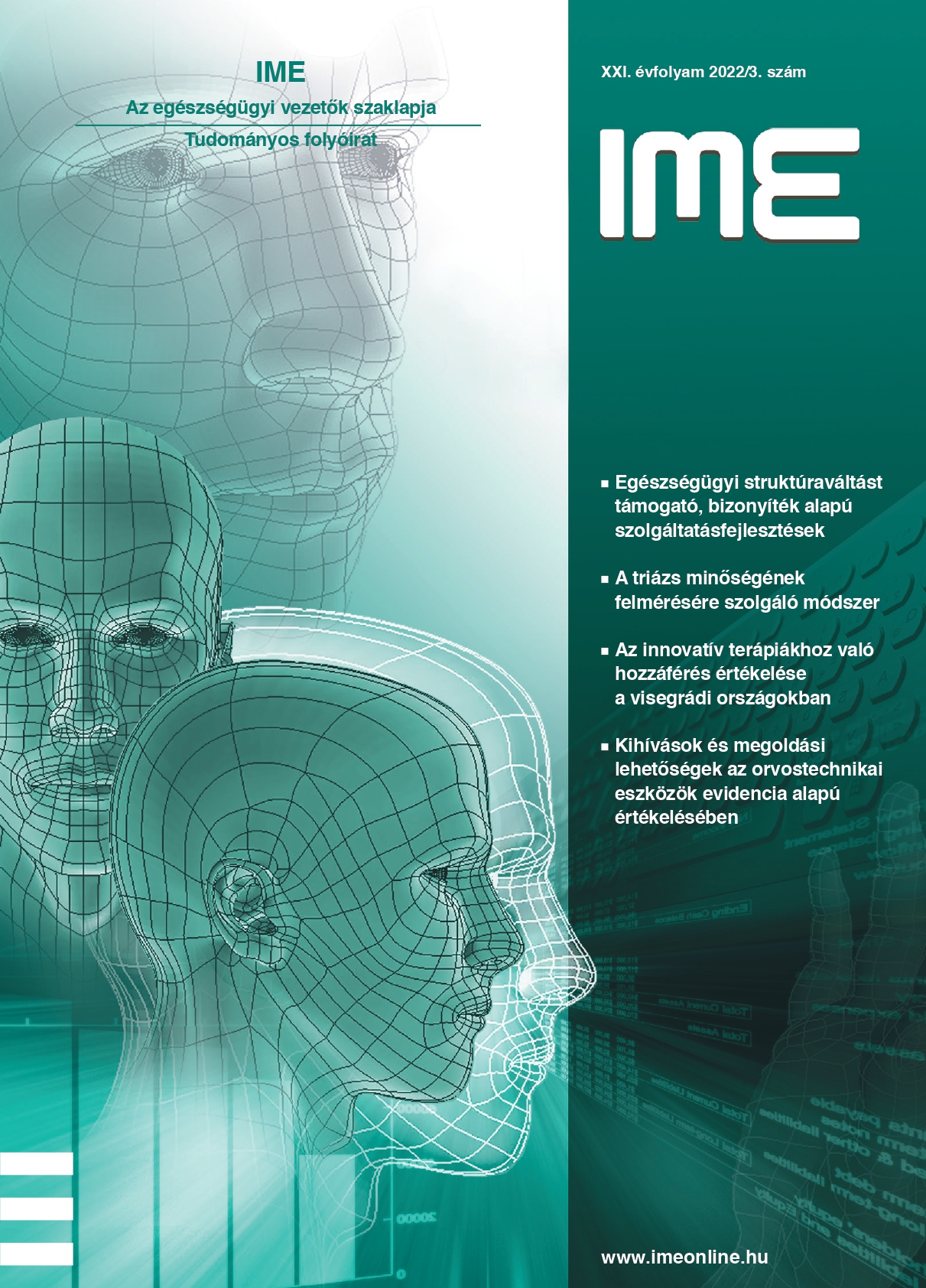Causes of pressure ulcers based on data from the NEVES reporting system and thoughts on prevention options
Abstract
The occurrence of pressure ulcers is a common problem in inpatient care and represents a considerable burden for both the patient and caregivers, although in many cases their development could be prevented. Experience has shown that there are systemic deficiencies in the delivery of care that contribute significantly to the development of these lesion in patients with individual risks. In our publication, we focus on these reasons.
The aim of our work is to present the general causes of pressure ulcers and the related prevention options, as well as to make recommendations for avoidance these.
The Pressure Ulcers Datasheet of the NEVES reporting system is used to report data from patients who have been admitted to the medical institution with intact skin and who have developed pressure ulcers within the same institution. In our publication, the analyses were based on the data received in the NEVES reporting system until 20 April 2018. Overall, data from 2,579 reported pressure ulcers were used for the research. Statistical analyses were performed on the data. In addition to the analysis of the received data, we also relied on literature sources and expert consultations.
Based on the data of events submitted to the NEVES reporting system, the mean age of patients affected by the development of pressure ulcers was 75.4 years, with a standard deviation of 13.5 years, and half of the patients were over 78 years of age, and 59.3% were female. Of all patients, 80.4% were reported to be lying down and unable to sit or stand up. 9.6% were only able to sit, 2.8% were supervised and 1.8% were able to move by themselves with assistive devices. In 97.5% of cases, a targeted risk assessment was performed. Furthermore, 90.8% of the reported cases had a nursing protocol for the prevention of pressure ulcers in the care department, and its provisions were applied in practice. Yet, the pressure ulcer still developed. The stage of the reported pressure ulcers at the time of detection was most often already stage II (60.5%), but in some cases it was III. stage (12.3%) or IV. stage (4.5%). An anti-decubitus mattress was used in 87.7% of the cases, a positioning pillow in 26.4%, a heel-protectors in 19.9%, an elbow-protectors in 4.1%, and other tools were used in 0.5% of the cases. One preventive tool was used in 69.8% of the cases, two in 22.6%, three in 6.1% and four in 1.5%. In 13.8% of the cases pain was mentioned as the reason for lack of mobilization.
The general causes of pressure ulcers were divided into 12 groups: regulatory deficiencies; employees do not follow the rules; lack of risk assessment; inadequate risk assessment; not using preventive tools or procedures; use of inappropriate prevention tools; patient movement / mobilization is delayed or inadequate; misuse of restrictive measures; improper use of other means of supply (for example oxygen probe, permanent catheter); skin surface irritation, exposure to injury; documentation shortcomings; knowledge gained from previous events is not utilized.
Properly conducted risk assessment, the correct application of the appropriate preventive tool and the up-to-date knowledge of staff play a key role in prevention. Regarding the latter, it is of great importance how and for how long professional evidence is transferred into daily practice.
The underlying causes of pressure ulcers can be very diverse. In order to reveal the systemic problems that occur in a given institution, it is necessary to analyse the events that have taken place, and to do this, data must be collected. In order to prevent problems arising from the operation of the institution, causal research should be carried out. Based on the results of such research, targeted measures can be taken to reduce the incidence of pressure ulcers.

This work is licensed under a Creative Commons Attribution-NonCommercial-NoDerivatives 4.0 International License.




